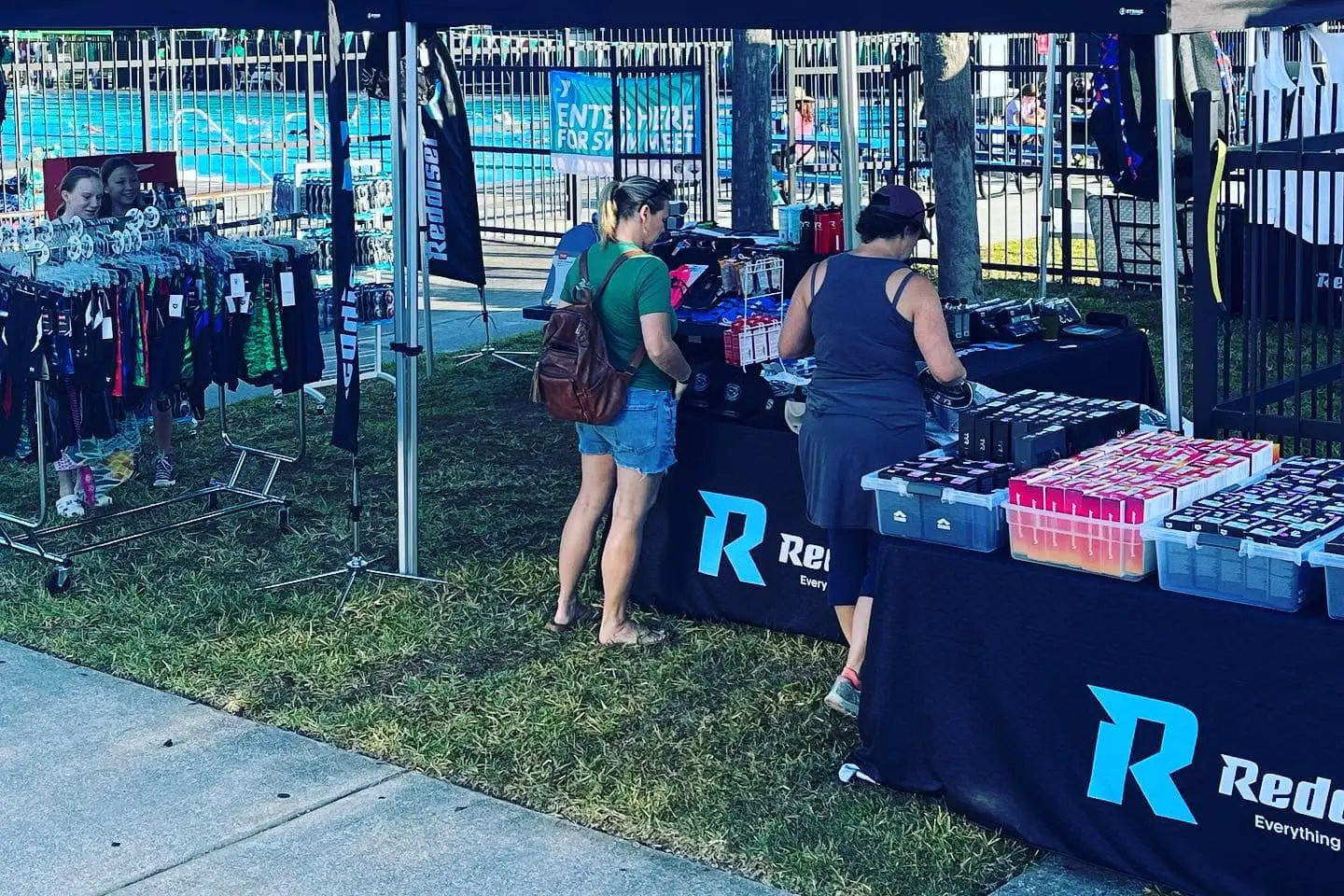How to Prepare for Your Swim Team Suit Fitting
Getting ready for your first swim team suit fitting? No worries, we've got you covered!
It's a bright Saturday morning and you and your two energetic kids are on your way to their first swim team fitting. The atmosphere in the car is electric, charged with a blend of excitement and a touch of nervous anticipation.
Your youngest, still a bundle of curiosity and giggles, is excited about every little thing, from the prospect of trying on a "real swimmer's" suit to wondering how quickly they can splash into the pool. Meanwhile, your older child, with their competitive streak, is already dreaming of triumphant finishes, imagining the thrill of that first victorious race.

You, as a parent, feel a knot of pride, worry, and excitement. There's a sense of pride seeing your children ready to embrace a new challenge, coupled with parental worry about their comfort and readiness. Yet, above all, the excitement of watching them grow, learn, and enjoy prevails.
If your budding swimmer hasn't had the chance to experience a swim team or wear a competitive suit before, we've gathered some helpful insights to assist you when it's time to get your team suit. Don't forget to check out our helpful video guides at: https://reddiset.com/pages/guides-tips
Do I need to invest in a team suit?
The answer varies depending on the team. Some mandate the use of a team suit for all members, while others only recommend one. The team suit helps foster a sense of belonging and team spirit. It can also give your young swimmer a mental edge during competitions, making them feel part of a cohesive, professional team.
Why not simply pick up a suit from Target, Walmart, etc.?
The main reason is durability. Competitive swimwear is designed to withstand daily usage and exposure to pool chemicals, making it far more enduring than recreational swimwear. Plus, your team suit represents your "uniform" for swim meets, much like any team sport. High-performance materials used in competitive swimwear also help swimmers achieve their best times by reducing drag and providing a more streamline silhouette.
Should I wear my team suit for practice?
This also varies from team to team. We usually suggest having a separate practice suit, but it's not uncommon for some to have two team suits and rotate them for longevity. This helps extend the life of the suits and ensures that the competition suit remains in top condition for meets.
How is the suit supposed to fit?
In general, competition suits should fit snugly. They do tend to loosen a bit when wet, so a tighter fit helps reduce water drag. Please wear form-fitting undergarments to your fitting, which you'll keep on while trying on suits. Remember, a well-fitted suit can provide a more hydrodynamic shape, which ultimately improves performance.
For girls, you'll want to focus on the fit around the lower back, bottom, and straps. Choose a suit that gaps the least. Shoulder straps should stretch no further than midway between shoulders and ears. For boys, check the fit around the hips. Ideally, no more than two fingers should fit between the suit and hip bone. Adjustments can be made with the drawstring waist if needed. It's worth noting that younger or less experienced swimmers might not immediately like the snug fit of competition suits. We encourage the right fit but also don't want to dampen the swimmer's enthusiasm, so a balanced approach is best.
What other items will my swimmer require?
This varies by team, but generally, all swimmers should have goggles. Recreational goggles usually aren't up to the task for team use. High-quality goggles are essential for clear vision in the water and should offer a watertight seal, comfort, and UV protection.
Swimmers will also need a swim cap. Most teams use team caps to complete their uniform. Having an extra cap or two for practice or as a backup is a good idea. Swim caps reduce drag and protect the swimmer's hair. You can choose between latex and silicone versions. Silicone caps are thicker, easier on the hair, more durable, but pricier and less flexible. Latex caps are affordable and thinner but can pull on some hair textures. Whichever type of cap you choose, ensure it fits comfortably and securely, without slipping off during swims.
Contact us today to learn more about how we support everything swim team!

